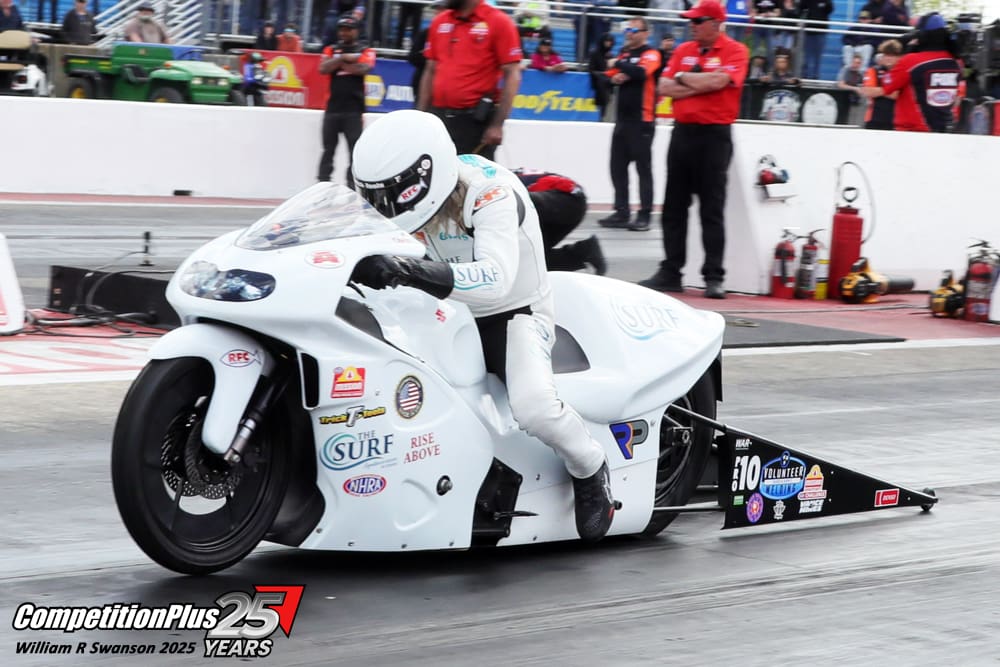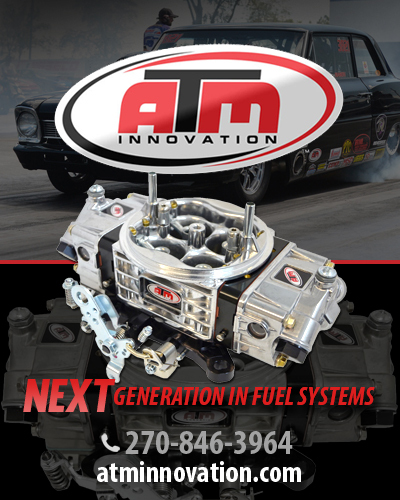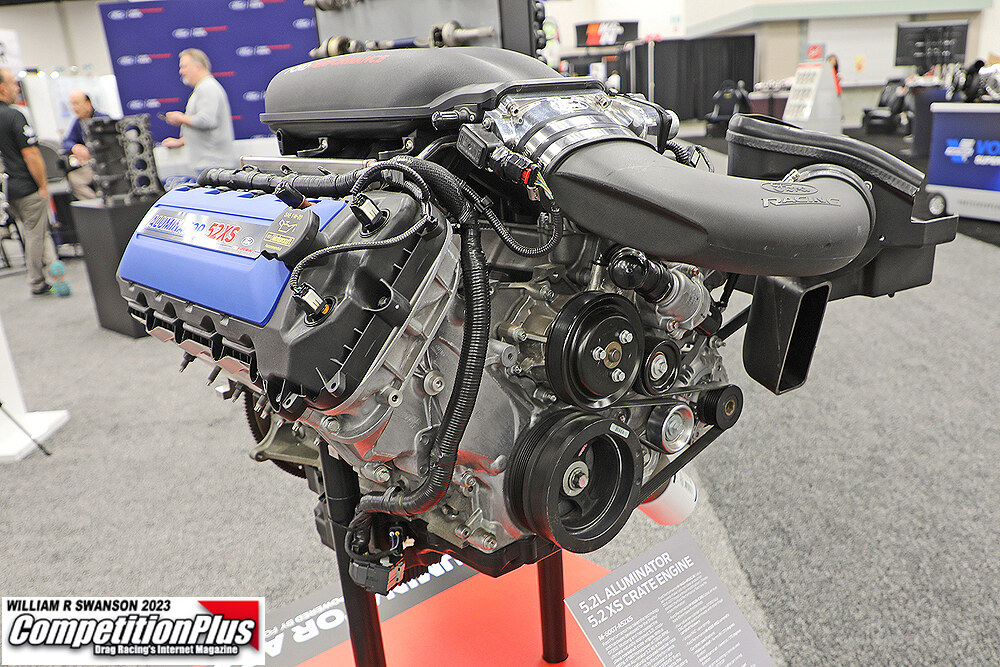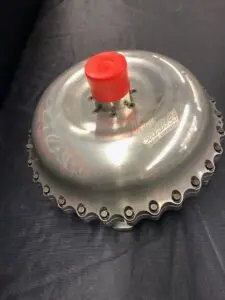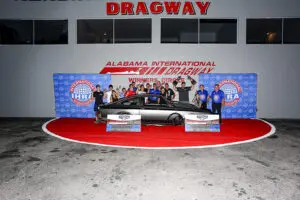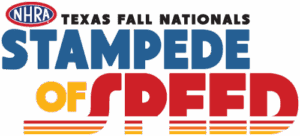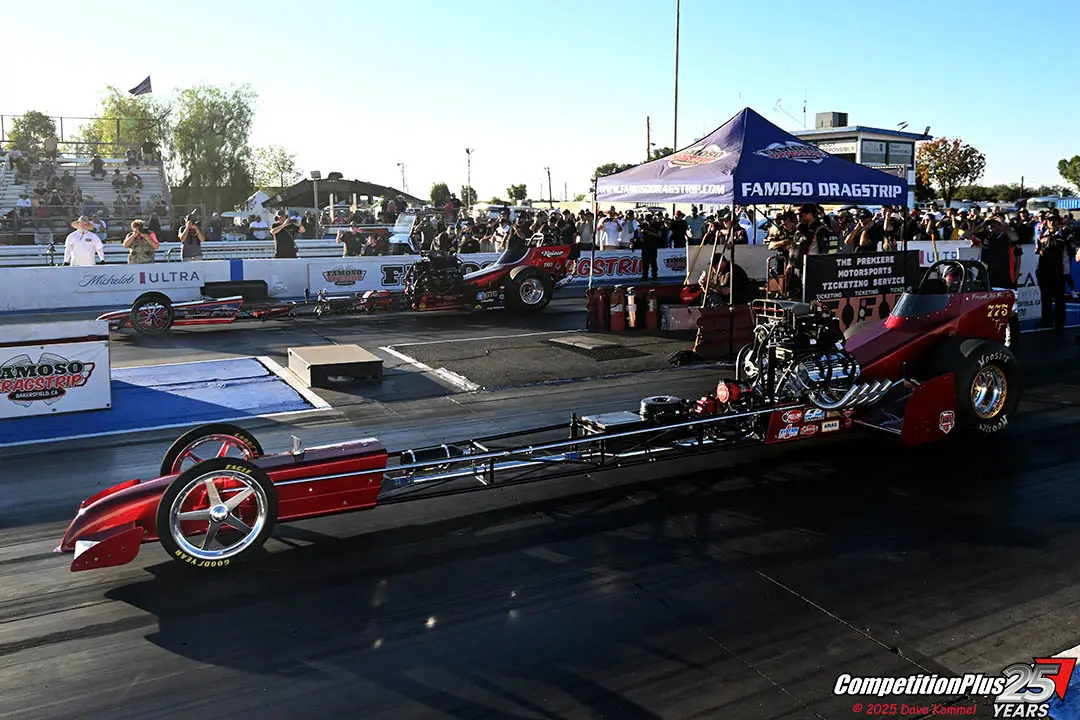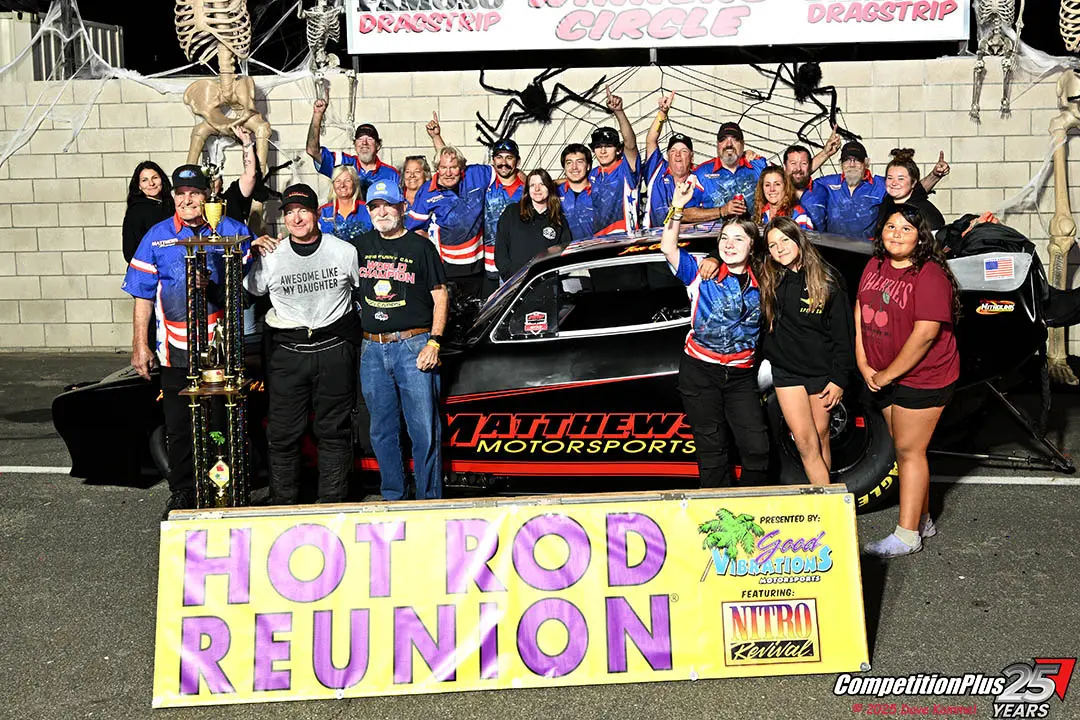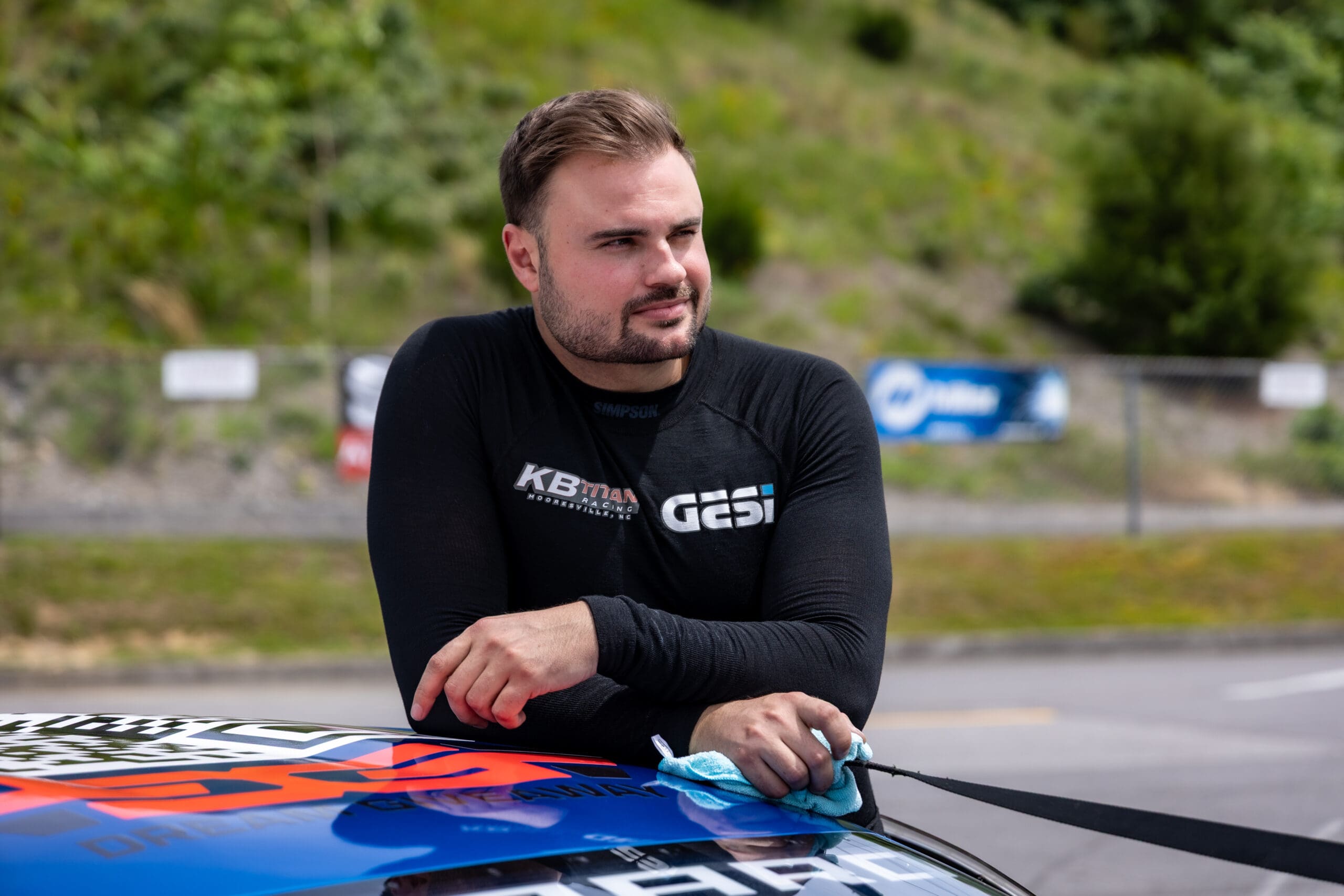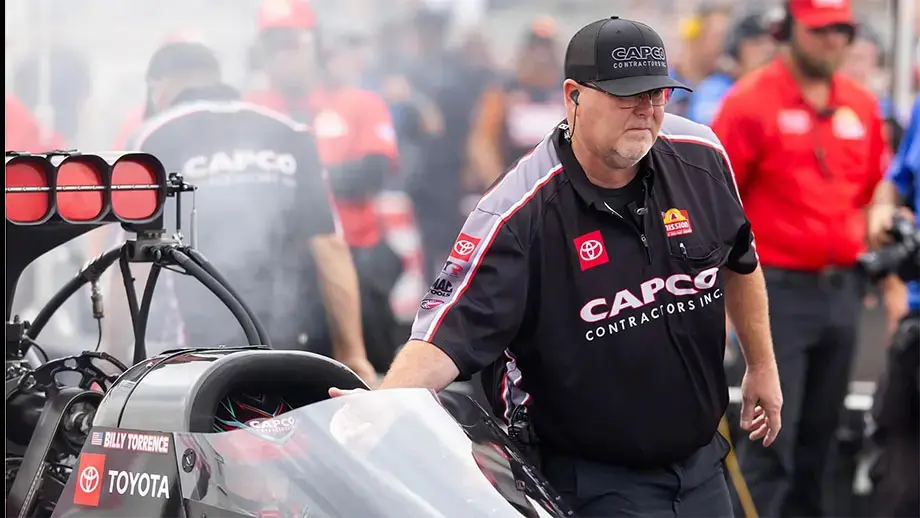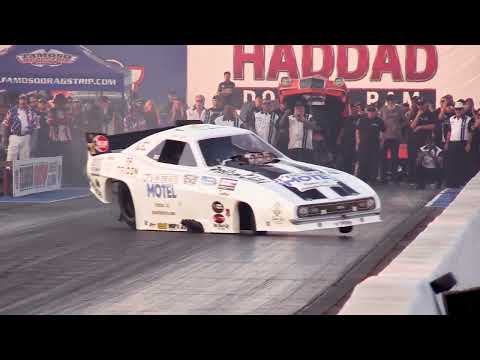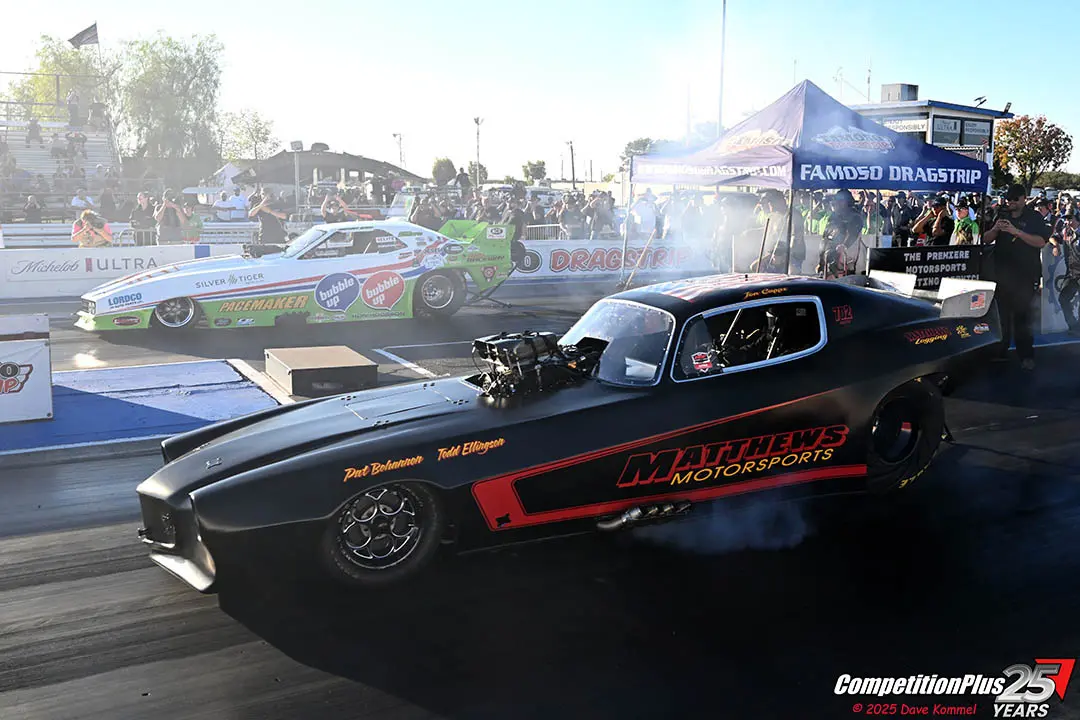
Pro Stock Motorcycle racer Chris Bostick looks at his laptop as he prepares to make a pass on the White Alligator Racing (W.A.R.) back-up bike at Seattle’s Pacific Raceways after his opening-round crash during Northwest Nationals eliminations.
Hailed for his hardiness following his NHRA Northwest Nationals Pro Stock Motorcycle crash at about 150 mph with a 5G wallop into the guard wall with the left side of his body, Chris Bostick waived off any further medical attention, got on a back-up bike, and competed in the next round of eliminations. Thirteen days later, while attending the Sturgis Bike Rally in South Dakota, Bostick began to realize he didn’t escape the incident unscathed.
He began experiencing troubling symptoms last Friday afternoon and later that night was rushed to Monument Health Hospital at Sturgis, S.D. Doctors there determined, after Bostick underwent a CAT scan and other diagnostic tests, that he was suffering from severe gastrointestinal bleeding. And the doctors concluded that it is related to the injuries Bostick sustained July 20 at Seattle.
They recommended Bostick immediate be transferred to a larger facility at Rapid City, S.D., but the Mount Juliet, Tenn., resident chose to return home to Nashville and be admitted to Vanderbilt University Medical Center for further evaluation and treatment.
According to a post on his Facebook page last Saturday, the White Alligator Racing (W.A.R.) rider “remains in stable condition and is prioritizing his recovery.” He was planning to race next at the U.S. Nationals at Indianapolis, NHRA’s Labor Day classic.
While Bostick heals, his incident demonstrates that the NHRA’s policies regarding wrecks and injuries remain broken. And to clarify this stance, that statement is not a criticism or condemnation of anyone in particular. Bostick is like most racers, who simply want to race and rather regard themselves as invincible. Name any racer who has hit the wall or had a significant engine concussion – they all shrug off the possibility of injury.
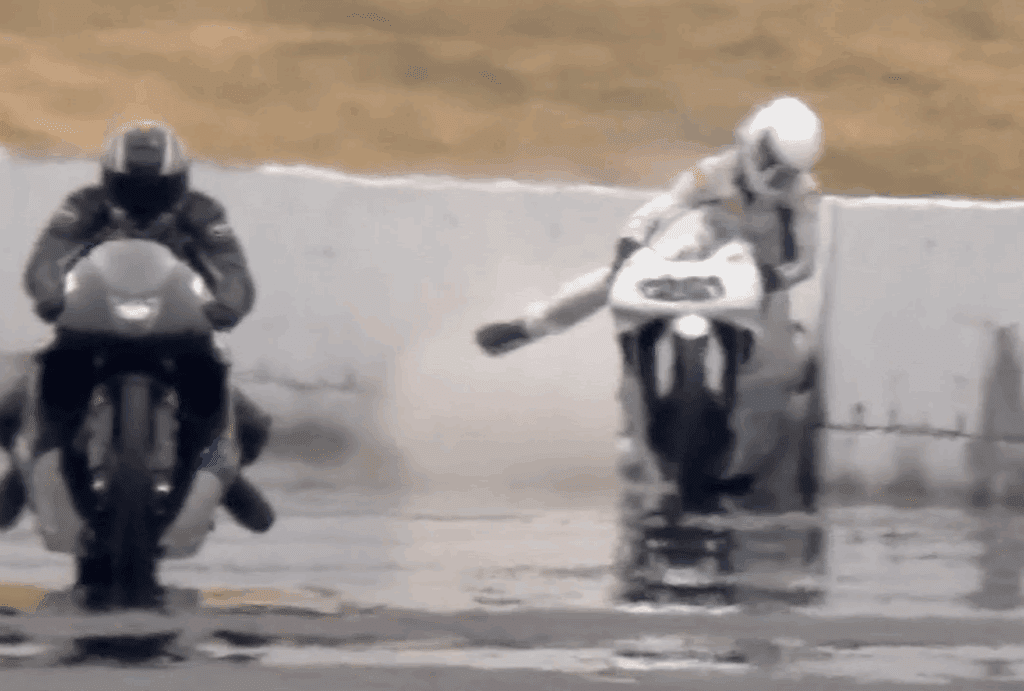
It’s true that Bostick proved he was one tough cookie, but gritty behavior and smart choices don’t always go hand in hand. Same goes for John Force – and Matt Hagan and Ron Capps and every driver who has gotten right back in a race car after a jarring incident. They’re racers, and that’s what racers do.
However, common sense needs to rule. And someone needs to remind racers of the bigger picture of life outside the racetrack. That’s why the sanctioning body has personnel in place: to stop the adrenaline from masking injury, to make sure the racer can continue his or her career with a healthy body, and, frankly, to protect the organization.
The NHRA has the responsibility of ensuring beyond a reasonable doubt that a driver is medically fit to operate a race car and to enter and exit that car by himself/herself. That practice has been in use, although not administered equally. And it has the right to protect itself legally. It can do that by insisting – having a written rule in place, one the drivers know – that any racer who hits a wall automatically will be sent to an area hospital. And if doctors at that hospital determine the racer has suffered a concussion, the racer must sit out at least the next race. Forget points. Forget Countdown qualifying. Forget everything but making sure that racer is safe to race and safe to race against.
Why are drivers allowed to waive medical treatment, even precautionary observation? Inmates should not be running the asylum. Why does the NHRA not have a concussion protocol? Several years ago, this subject came up, and the NHRA took staunch offense to the statement that it doesn’t have a concussion protocol. But John Medlen said he wasn’t aware of it, and if John Medlen (who has spearheaded driver head and body protection safety measures for the past 18 years) isn’t aware of it, it doesn’t exist.
An NHRA representative offered a photocopied piece of paper as proof that the NHRA does have a concussion protocol. But it was a page photocopied from the U.S. Olympic Swimming Committee handbook. That laughable piece of paper is the best the NHRA could produce to show it cares about the drivers who risk their lives putting on the show? At best, it was insulting. The “controversy” could have served as a springboard for a discussion about how best to deal with incidents that have endangered drivers. But it didn’t. The NHRA’s reaction was akin to “We stomped our foot and told off that reporter. So there.” It didn’t benefit anyone.
Don’t let the racers decide if they’re fine following a violent engine concussion or wall-smacking wreck or a jolting dash into the sand trap or catch-fence. The jails are full of innocent people, and racers never get injured.
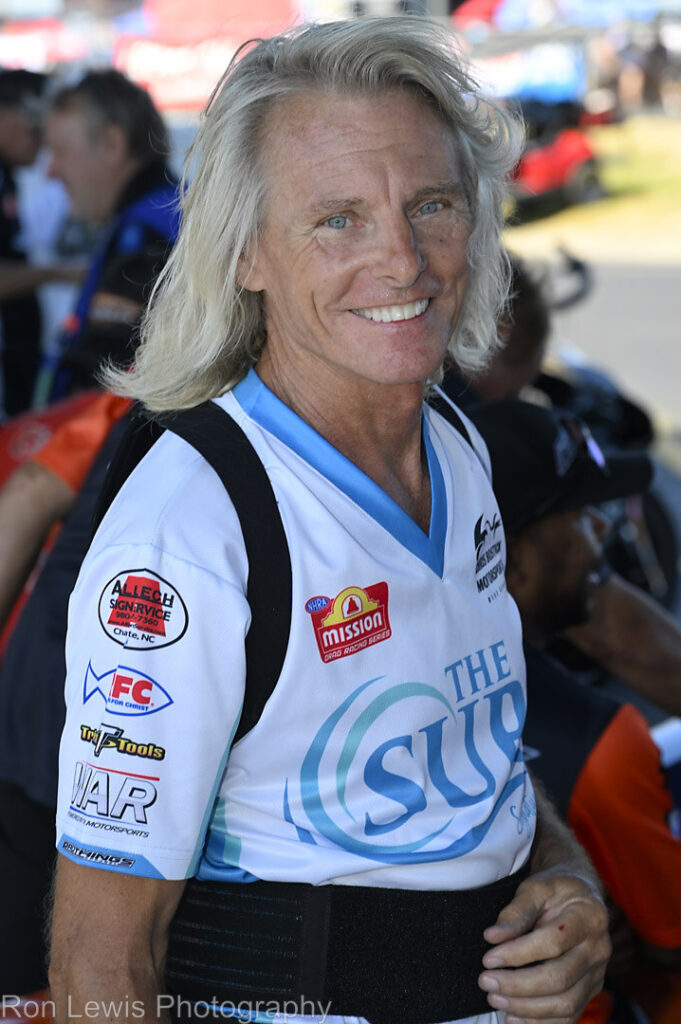
If money is the reason an injured or questionably injured racer isn’t forced to sit out an event, then shame on the NHRA, which should think of the situation from a different angle. If a fan favorite is sidelined, people still will buy tickets. People come to the drag races for all kinds of reasons, which just might include the notion they might get to talk with the sidelined racer and offer best wishes or sign a poster. No one driver is bigger than the sport. The collective effort of all of the drivers makes the show.
If what’s holding the NHRA back from doing what’s right is the threat of negative publicity, again, shame on the NHRA. First, the NHRA, although everybody loves the on-track product and the entertaining drivers and the social atmosphere, is not at the scale of NASCAR or IndyCar or stick-and-ball sports. That’s probably another story for another day, but the reality is it isn’t. And with less media attention, any mention of the sport is “earned media” – free publicity. The NHRA can stew about the effect of a particular article, but people still pack the grandstands at Gainesville, Reading, Sonoma, Phoenix, and other venues.
So the sanctioning body needs to have a concussion protocol and a policy that forces drivers who have crashed, ridden out an engine detonation, hit the wall or catch fence, collided with another driver, or fallen to the pavement to be transferred to a local hospital. That is something that will benefit all parties.
This article originally appeared on the Wade Productions Facebook page.





